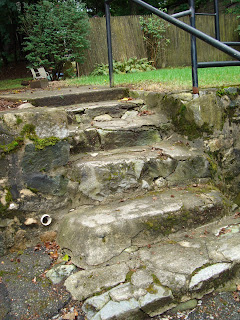Sommer, Robert and Barbara Sommer. A Practical Guide to Behavioral Research Tools and Techniques. New York: Oxford University Press, 2002.
The chapter in the Sommer and Sommer book, on mapping and trace measures, provided both useful and informative research observations. When mapping out areas based on human usage, the most accurate information is not attained all in the same day. In order to get the most accurate information possible, one must research an area at different times through different parts of the week. An observation done at 8:00 on a Monday morning should be redone at say, 2:30 on a Thursday afternoon. This will almost guarantee that different people will be around and different activities will be occurring.
Place-cantered maps and Individual-centered maps provide two different means of research. Place-centered research is to be done using a map and scoring symbols. These symbols allow the researcher a code for their results. The research is spread out among more than one target and is based primarily on location and use. Individual-centered mapping is more directly tied to an individual and their activates throughout the day. It is stated that attaining an individuals trust is key in this procedure, by limiting observations and note taking on the first few days of contact. This research, all though becomes informative, also becomes one sided as you really only see one persons activities in a giving space. Because of this, I feel that overall, the method of place-centered maps is much more accurate as it doesn’t limit the data in a bias manor. Only observing one person becomes much too limited not proving accurate results.
Cognitive maps, as we have discussed before, are another great source of research when trying to understand the usage in a space. The way these maps are constructed, a researcher is able to see the differences in the individual’s interpretation and begin to understand the way a place is seen and used. This can be related back to the horseshoe pit that I was writing about in the sense that everyone in the space will have a different idea of what the pits really are. The emotional or cultural feeling within the pits may give each user a different feel while occupying the space, making them remember it in a different way when asked to diagram the space on paper.
Finally, Sommer and Sommer discussed different methods of trace measures. Trace measures simply means using your ability to read the landscape and being able to decipher what things such as graffiti, or worn out floors mean. When human observations aren’t permitted, trace measures are to me, only sometimes an acceptable alternative. Although many signs are clear, such as the gang membership logos as well as certain symbolic numbers, there are many exceptions that can alter these results. As stated in the end of the chapter, leaking water, and not overuse could have caused things like a worn out floor at a water fountain.
I was very intrigued by this part of the chapter when they wrote about the California forester that discovered the long lost Indian settlement. Just by simple observations of a place, he was able to tell what the previous use of it was for. The location was vital for fishing and had large oak trees that could have been used as a canopy. After scaling the property, he found writing and artifacts from a long gone Indian settlement. This is interesting the way that the open forest was interpreted and in result, lead to the discovery of a piece of history.
Overall I think this chapter will be good in helping me do my research. Although different times of day aren’t really an issue in my paper, these methods of study will be. I
have learned that I should interview people from different backgrounds, different places and different genders. This will allow me a large spread on information making my paper as accurate as it can possibly be.



